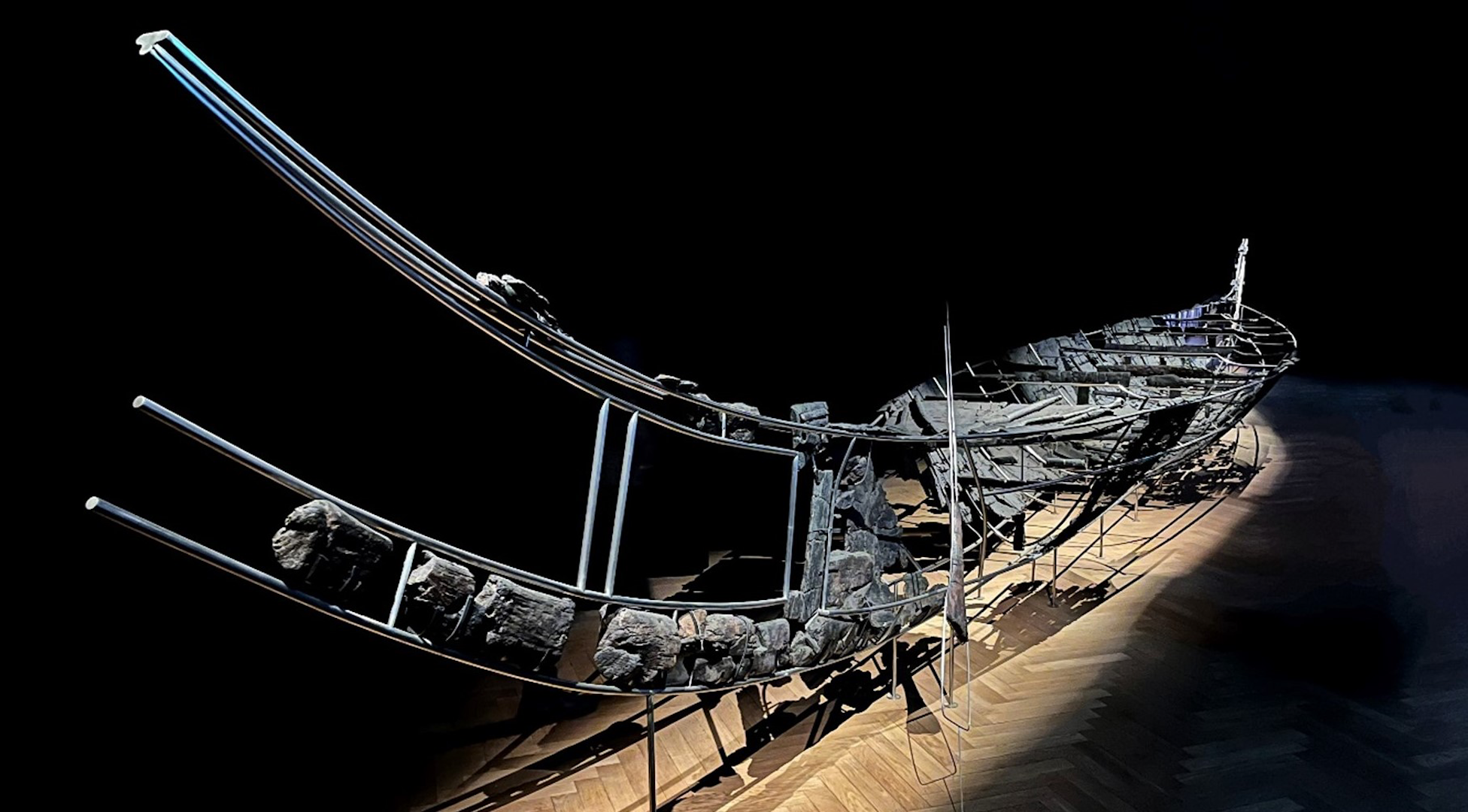Spider Snacks: Photos of Plant-Eating Arachnids
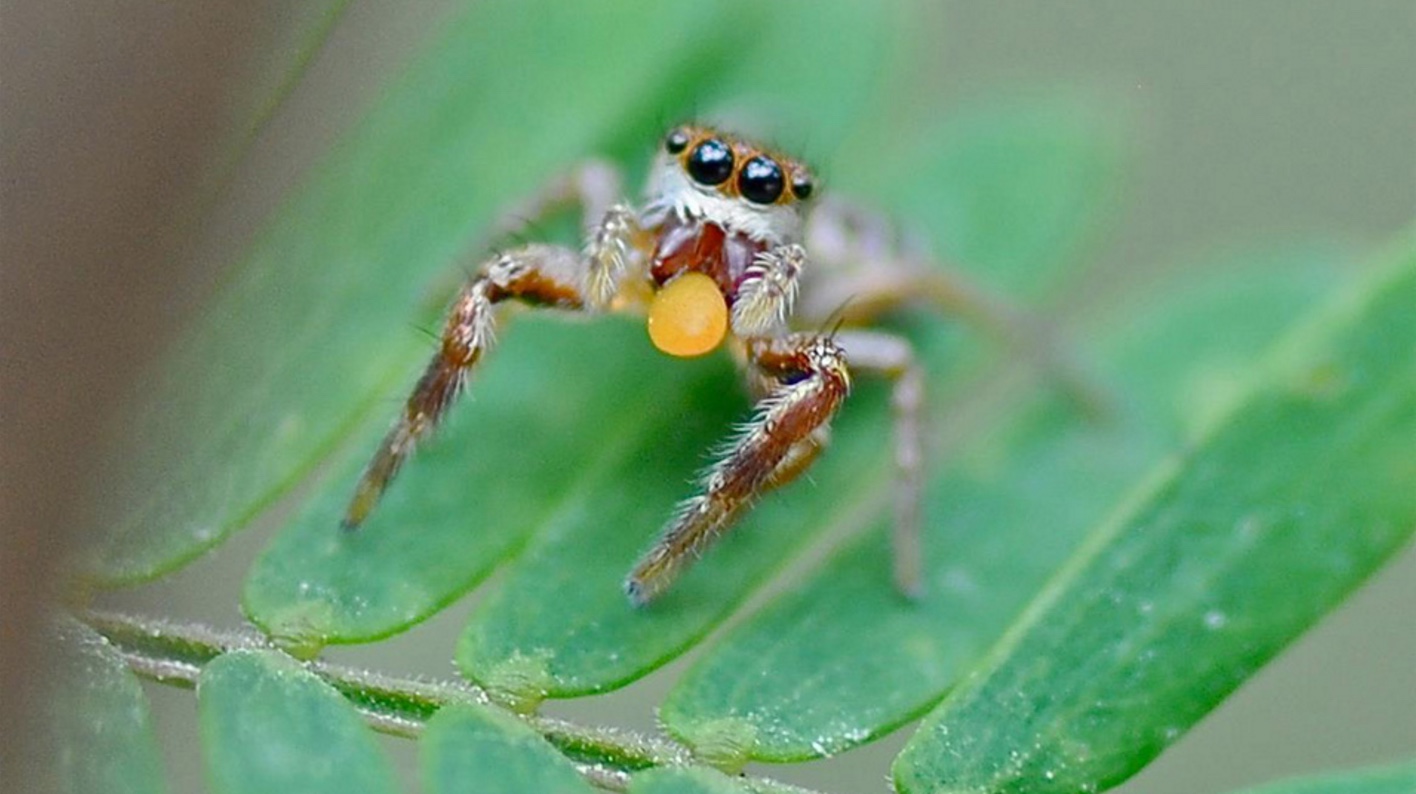
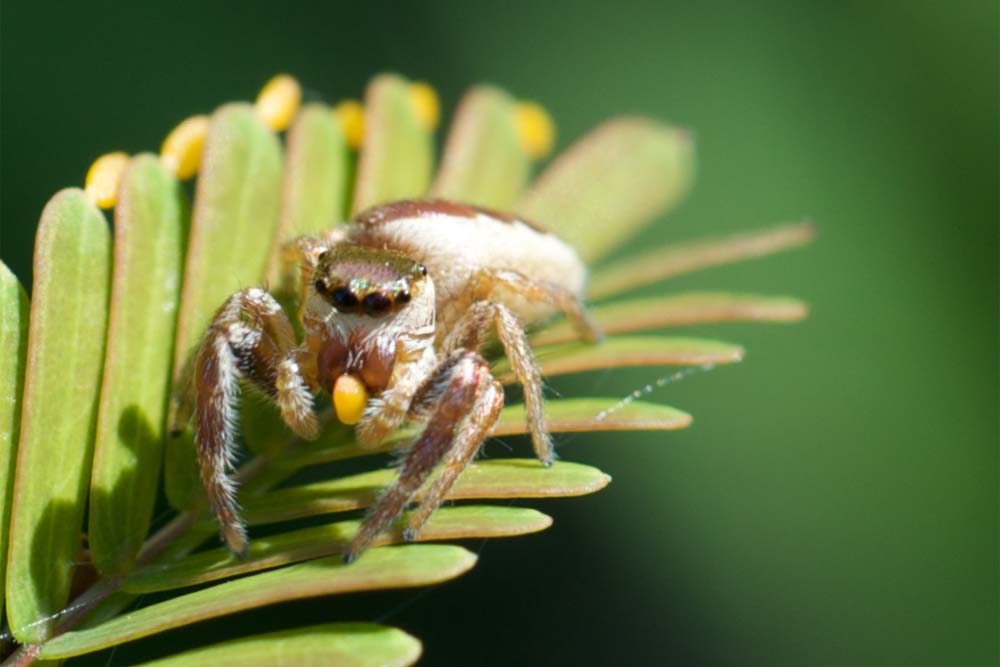
Spiders are known as cunning predators, but a new review in the Journal of Arachnology finds that many round out their diets with a side of vegetables. There are at least 95 reports of spiders eating plant matter, from nectar to sap to pollen, University of Basel lecturer Martin Nyffeler and colleagues reported in the paper.
One spider, a jumping spider species called Bagheera kiplingi, has a mostly herbivorous diet. Seen here, a female feeds on the fatty, protein-rich Beltian bodies of the acacia plant. These structures are part of the plant's strategy to attract ants, which protect the plants against herbivores. But spiders have found a way to muscle in on the free food, too.
(These photos are from Martin Nyffeler's article "Phytophagy in jumping spiders: The vegetarian side of a group of insectivorous predators" http://peckhamia.com/peckhamia/PECKHAMIA_137.1.pdf)
Sweet Treat

The majority (about 75 percent) of reports of spiders eating plant products involve nectar consumption. Here, a male jumping spider (Sassacus papenhoei) eats from a nectar-secreting gland in South Carolina.
Competition for food
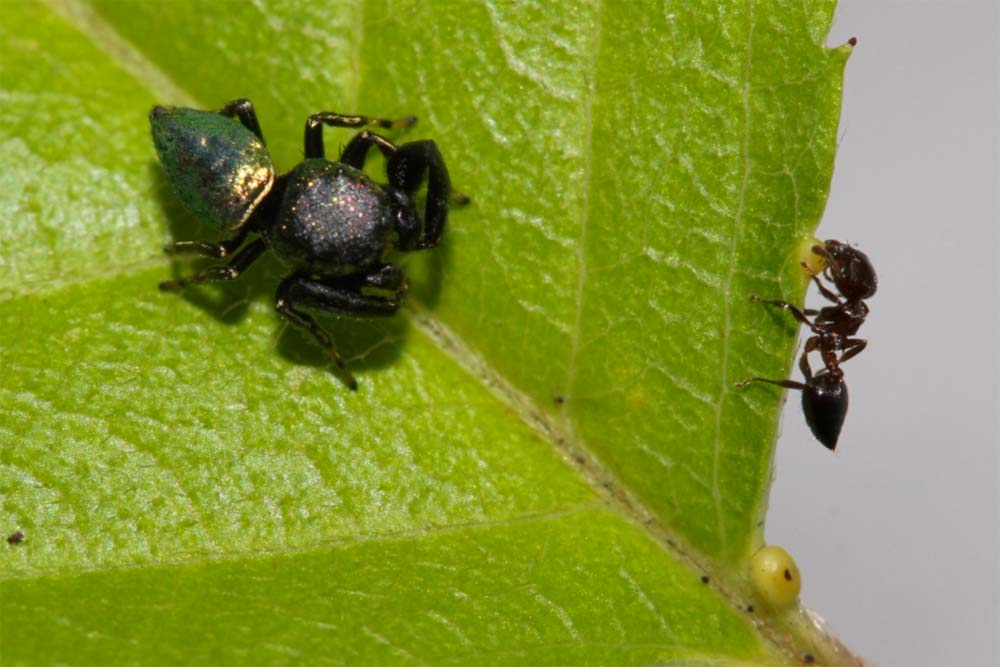
Seeking out nectar can put spiders in direct competition with ants, which also rely on the energy-rich liquid from plants. Ants are defensive of nectaries, so spiders usually watch and wait for the ants to leave before scuttling in to drink nectar themselves. This male jumping spider (Sassacus papenhoei) waited until this ant left to drink from the same nectary. [Read more about vegetarian spiders]
Waiting for a turn
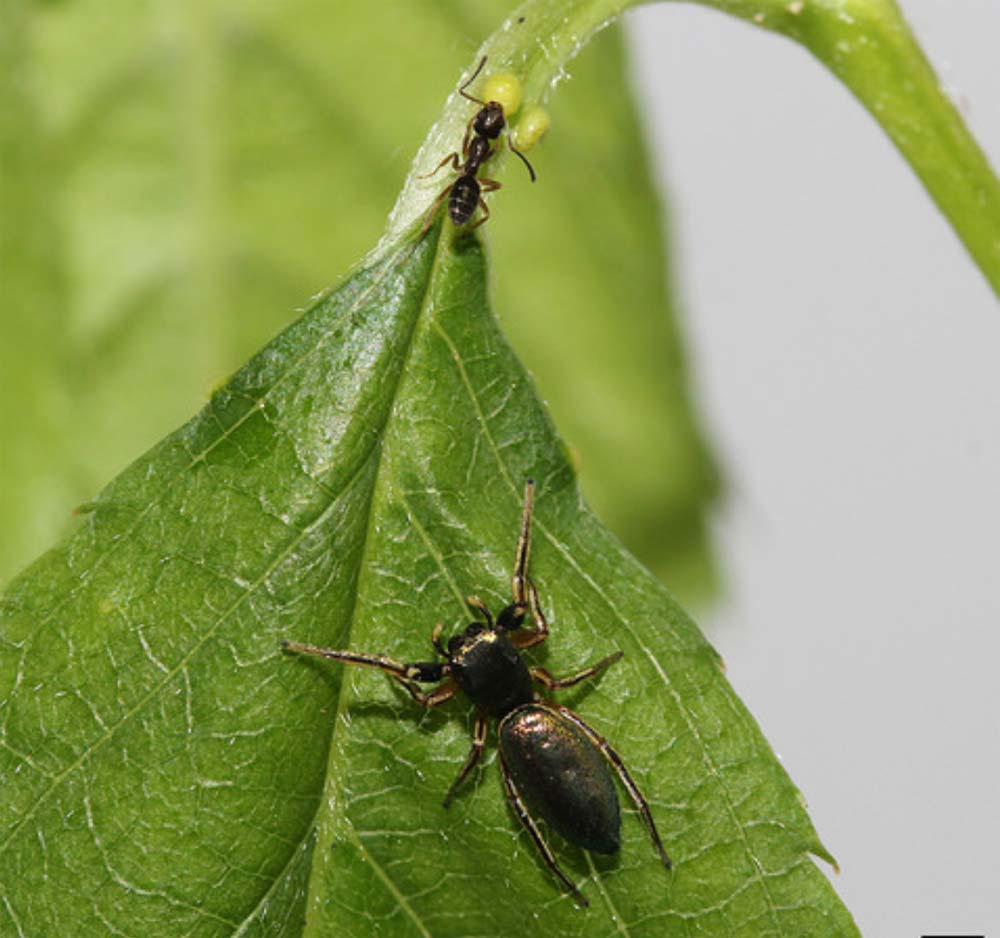
A female jumping spider (Tutelina elegans) normally eats ants. But in this image, she waits patiently as an ant drinks from a plant nectar gland, or nectary. Jumping spiders have strong vision and avoid their ant competitors by sight. If a confrontation ensues, the spiders typically out-run or out-jump the ants.
Sipping something sweet
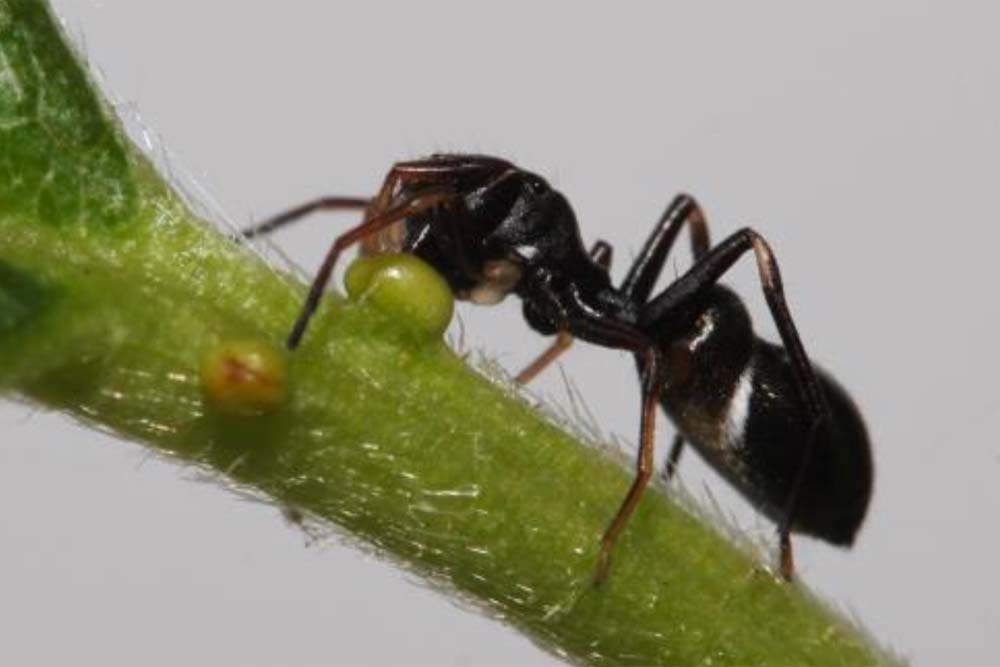
A female jumping spider of the genus Peckhamia drinks from a nectary on a shrub of the genus Prunus, a group the includes plums, almonds and chokecherry. Spiders may spend anywhere from a few seconds to a few minutes sucking nectar from these plant structures. Peckhamia spiders look and act like ants, which makes it easier for them to slip into ant-guarded nectaries for a snack.
Get the world’s most fascinating discoveries delivered straight to your inbox.
The confrontation
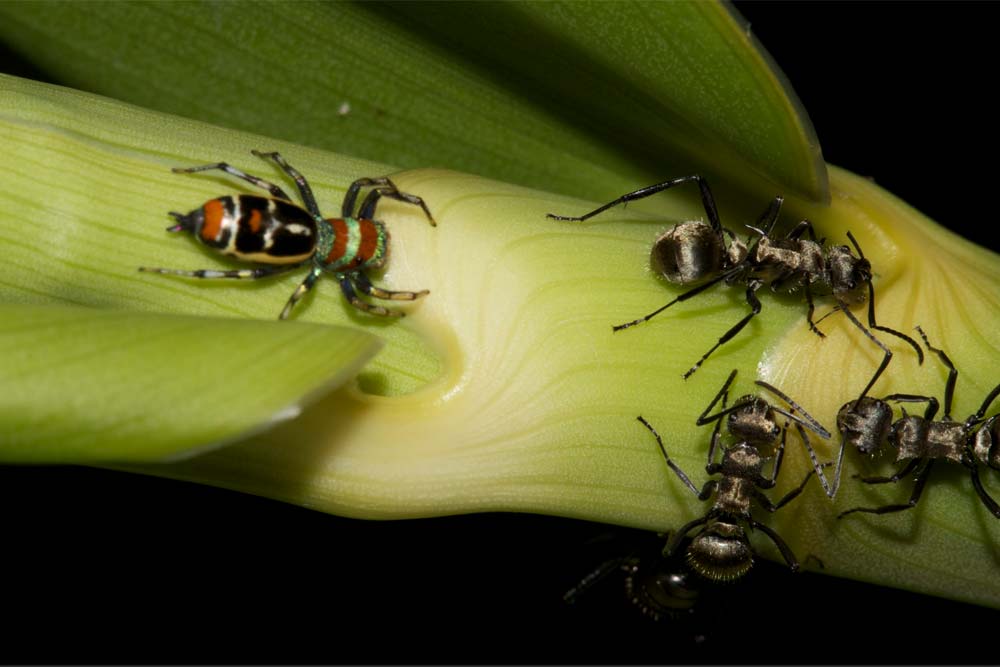
A colorful Cosmophasis micarioides jumping spider watches and waits for an opportunity as golden-tailed spiny ants feed at a plant nectary near Cairns, Australia. The spider dashes forward to sneak a sip of nectar whenever the ants move aside.
Midnight snacks
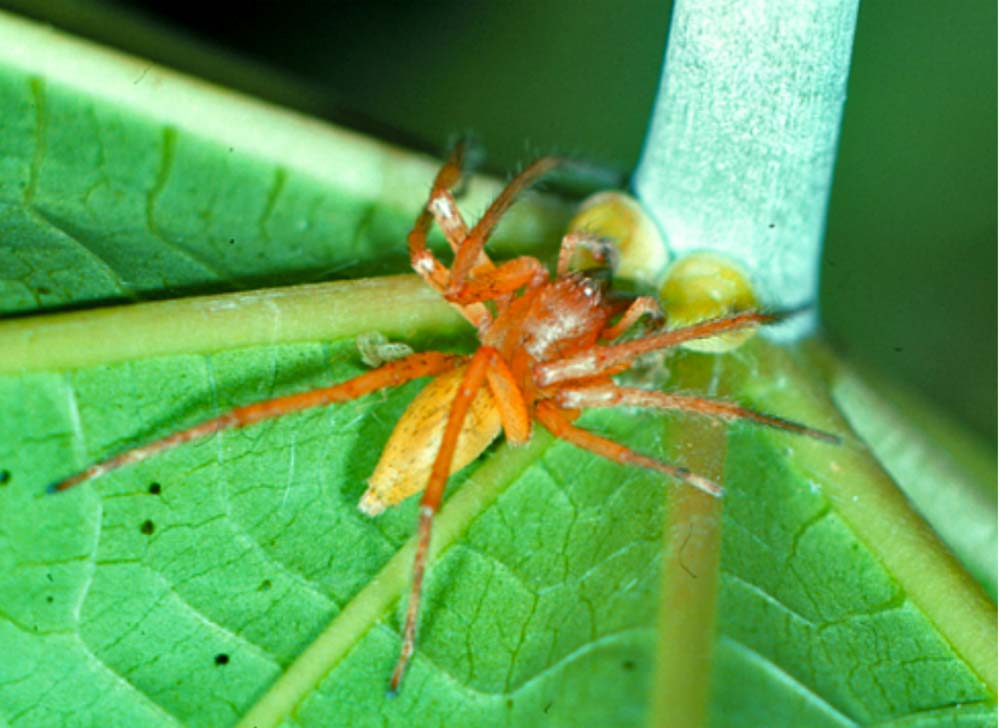
Jumping spiders aren't the only nectar-imbibing arachnids. Some nocturnal running spiders, like this Hibana velox in Vero Beach, Florida, also drink from plant nectaries. This spider is drinking nectar from a castor bean plant. "In their search for nectar, these spiders wander over plants and stop for a while each time they have approached a nectary," according to Nyfffeler. "The spiders then press their mouthparts into the nectary opening imbibing nectar, which may last from a few seconds up to a few minutes."
Sipping sap

Some spiders don't just drink nectar; they also seek out plant sap. The female jumping spider Pelegrina galathea bites into a leaf and sucks down the sap that oozes out. This picture was taken indoors.
Biting spiders
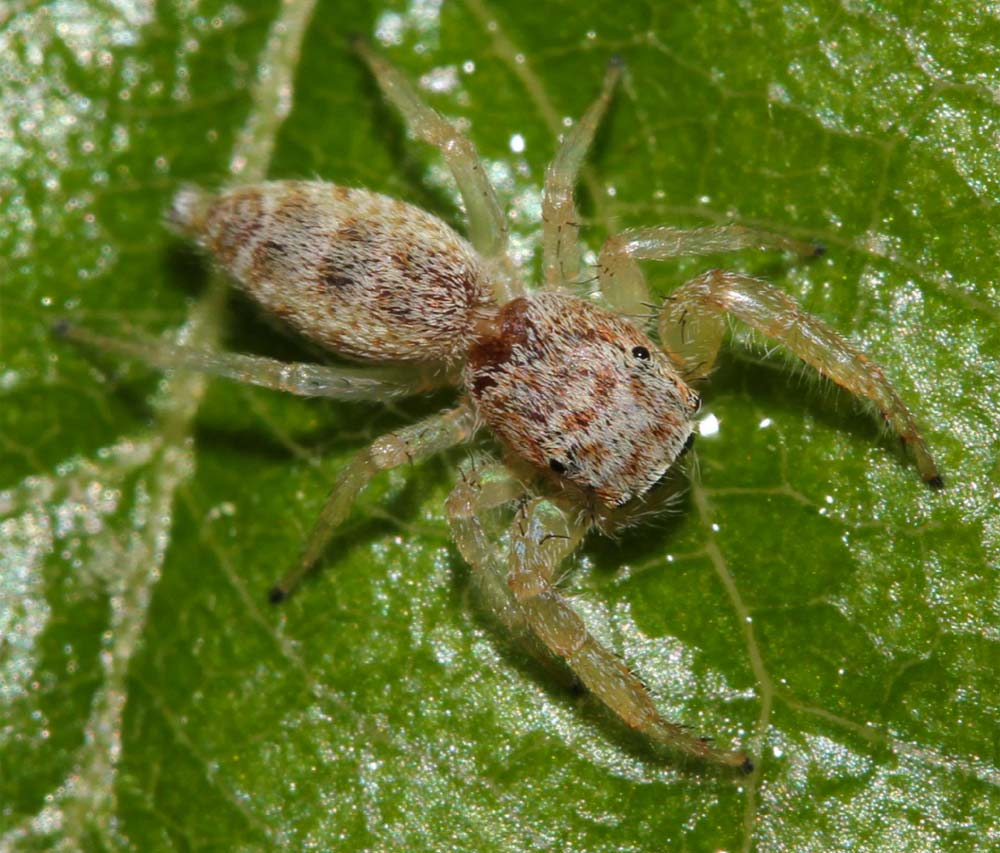
An indoor shot of the female jumping spider Hentzia milrata drinking plant sap. Spiders can't digest solids, but they can bite through leaves to get to the liquid food inside.
Pollen studded

Another plant food some spiders enjoy is pollen. Research suggests spiders lack the enzyme to digest pollen's outer shell, but they can pierce the pollen with their fangs and inject digestive juices to soften up the inside, just as they might with a fly or other insect. Here, a jumping spider of the species Plexippus is decorated with pollen at a home garden in Kinshasa, the Congo.
Web-caught pollen
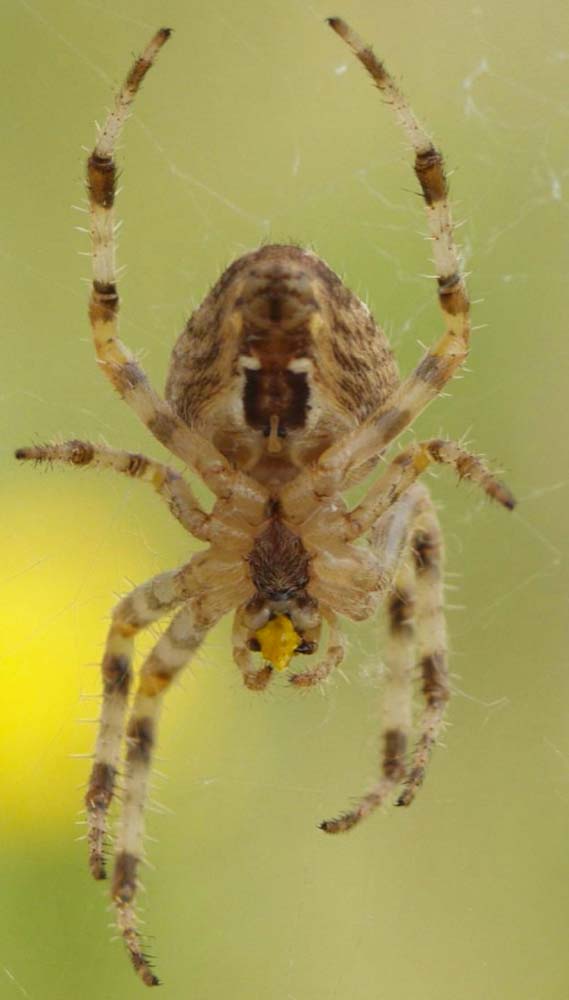
A female orb-weaver spider Araneus diadematus gets a consolation prize after a wild bee escapes her web: A packet of pollen left behind by the struggling insect. She digests and consumes it. This photo was taken near Munich, Germany, but most reports of spiders eating plant matter come from tropical and subtropical regions, where sap- and nectar-excreting plants are plentiful.

Stephanie Pappas is a contributing writer for Live Science, covering topics ranging from geoscience to archaeology to the human brain and behavior. She was previously a senior writer for Live Science but is now a freelancer based in Denver, Colorado, and regularly contributes to Scientific American and The Monitor, the monthly magazine of the American Psychological Association. Stephanie received a bachelor's degree in psychology from the University of South Carolina and a graduate certificate in science communication from the University of California, Santa Cruz.


